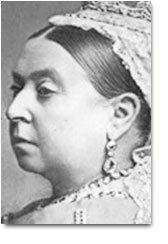
The Conradian: Review
By John G. Peters, University of North Texas
It is not surprising after his fine four-volume collection, Joseph Conrad: Critical Assessments (1992), that Keith Carabine would produce yet another excellent collection in his volume of Lives of Victorian Literary Figures. In this case, Carabine has published a collection of early commentary, reminiscences, and other relevant materials on Conrad in this three-volume series.
This lengthy collection consists of facsimile reprints as well as newly typeset pieces, and Carabine divides the volume into twenty sections of varying length; these sections include, for instance, ‘Early English and Polish Responses to Conrad,” ‘Conrad, Food and Money,” “Saving Conrad from Himself,” Publicizing Conrad in America,” “Claiming Conrad for Poland,” “Conrad at Oswalds,” and ‘Documenting Conrad.” Each section contains between one to six articles or excerpts related to the title of the section, along with an extended and highly informative introduction to each section.
In addition, a bibliography of primary and secondary texts, a detailed chronology, and an informative and lengthy introduction prefaces the volume as a whole. The collection is followed by numerous relevant and extremely helpful notes to the texts.
Among the selections appearing this volume are Hugh Clifford’s ‘The Genius of Mr Conrad,” Robin Douglas’s “My Boyhood with Conrad,” Richard Curle’s ‘The Last of Conrad,” Lady Ottoline Morrell’s “Joseph Conrad: An Impression,” Alfred A. Knopf’s “Joseph Conrad: The Romance of His Life and Books,” as well as extracts from Ford Madox Ford’s Joseph Conrad: A Personal Remembrance, Bertrand Russell”s The Autobiography of Bertrand Russell, J. Sutherland”s At Sea with Joseph Conrad, and Borys Conrad’s My Father: Joseph Conrad.
Overall, this collection is a very useful and well-done addition to Conrad studies. The notes and introductions by themselves make the volume worthwhile, and the selections themselves bring together in a single volume numerous commentaries, both more and less well known, that make for an easy reference for those researching Conrad in the context of his time and in the eyes of those who knew him.
My only reservations concerning this collection are in the actual production process itself. Placing facsimile reproductions next to newly typeset pieces is jarring to the eye. Somewhat more important, though, is the production quality of at least two of the selections: T. P. O’Connor’s “A Book of the Week,” which is difficult to read because of the poor quality of the reproduction, and William Rothenstein’s “Genius at the Turn of the Century,” whose text is askew at the margins on several pages. In the case of O’Connor’s piece this is probably the best quality reproduction available, since the photocopy was likely taken from microfilm, but given the fuzziness of the text in many places, this selection would have been a good candidate for being typeset anew.
Less understandable is the quality of the reproduction of the Rothenstein piece. Given the wide circulation of the Atlantic Monthly (from which the piece was taken), surely a better copy was available. The copy in my own university library is perfectly readable, with no text askew.
At the very least, this selection as well could have been re-typeset for this volume if a better photocopy could not be had. One other minor inconvenience lies in the lack of in-text indications for notes. One must refer to the back of the volume to look to see what information has been annotated from any particular selection.
This is not an unknown practice, but it is somewhat more cumbersome than superscripted numbers or symbols indicating an associated note or footnotes at the bottom of the pages. Of course, in-text indications would be impossible with the facsimile reprints, but perhaps using footnotes rather than endnotes would have been a reasonable compromise. Nevertheless, these are minor inconveniences in an otherwise excellent collection that certainly belongs in any good library collection.
© 2009 John G. Peters